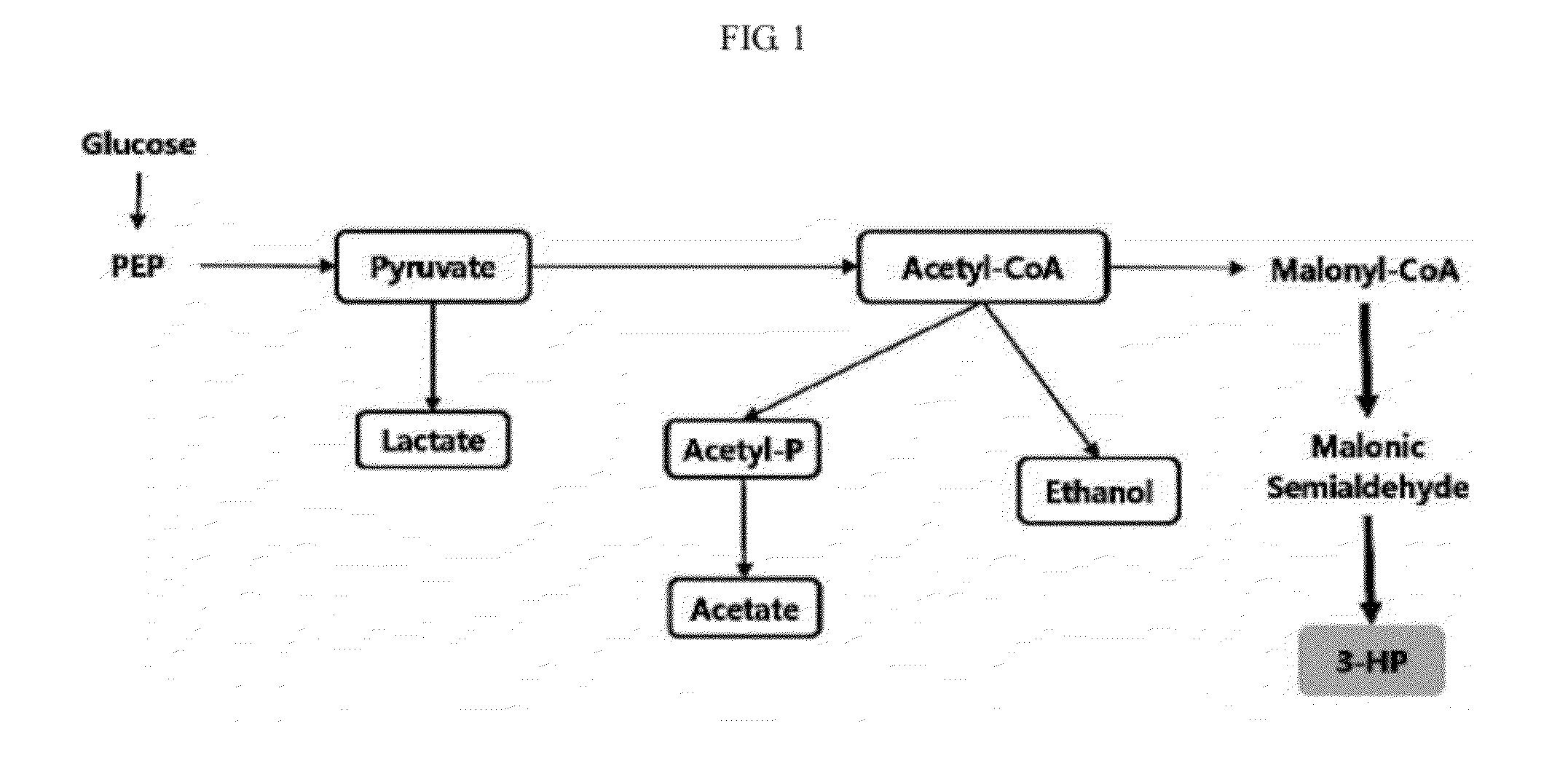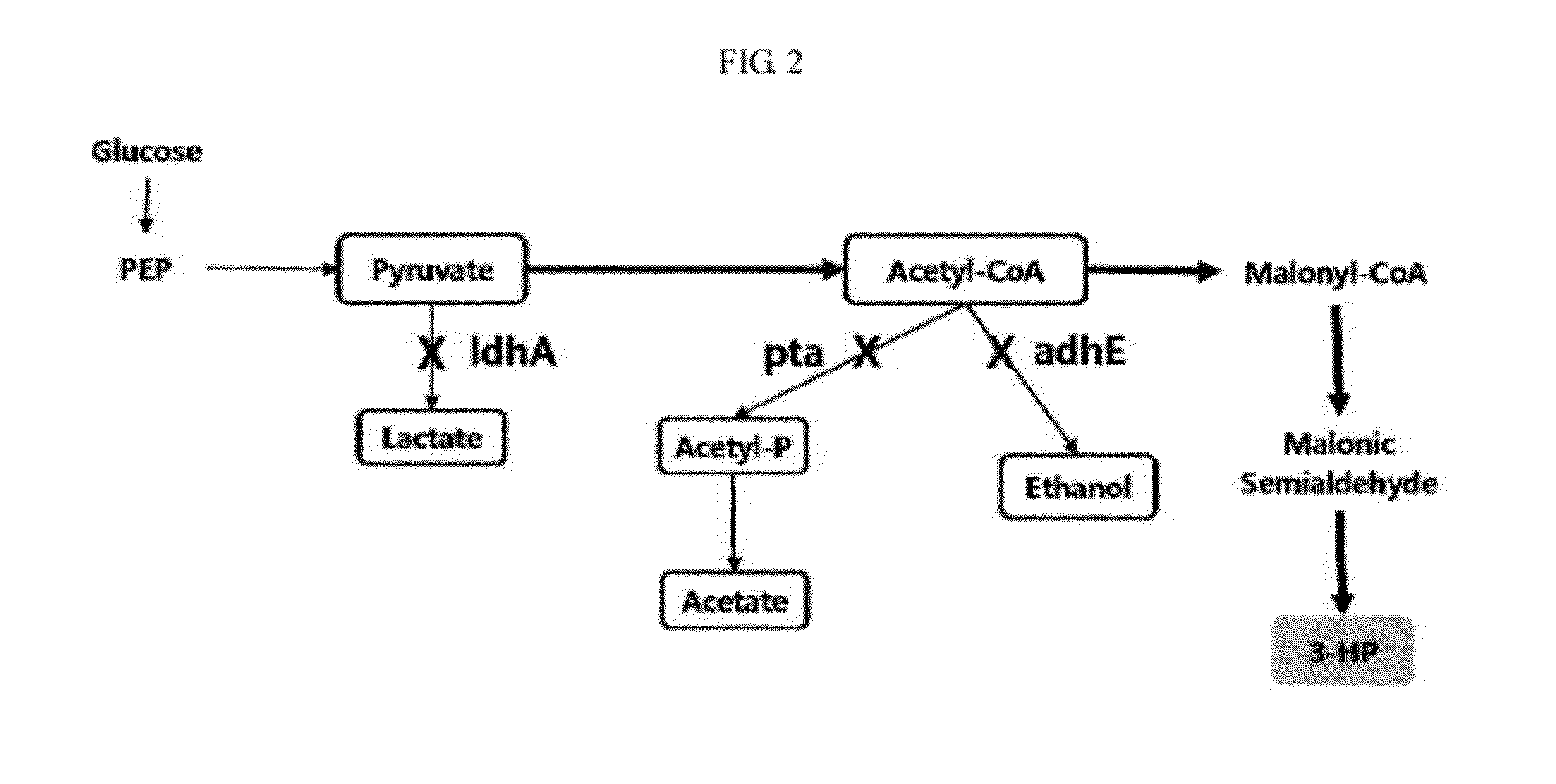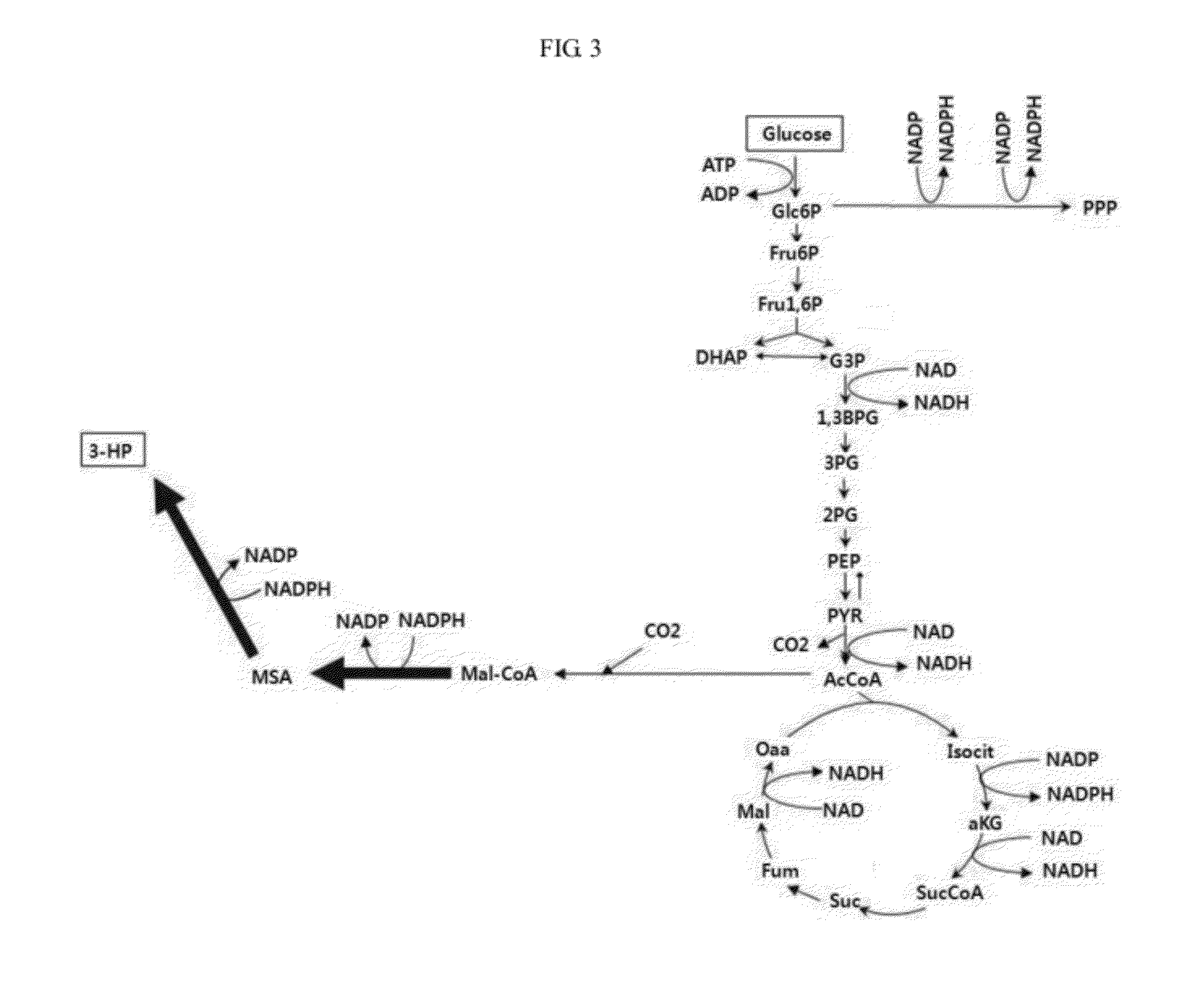Genetic modification for production of 3-hydroxypropionic acid
a technology of 3-hydroxypropionic acid and gene modification, which is applied in the direction of enzymology, microorganisms, transferases, etc., can solve the problems of large energy consumption of chemicals, toxic and carcinogenic chemicals, and the imperative of bio-based fuel production, etc., to increase the malonyl-coa pool and increase the 3-hp production efficiency
- Summary
- Abstract
- Description
- Claims
- Application Information
AI Technical Summary
Benefits of technology
Problems solved by technology
Method used
Image
Examples
example 1
[0134]The following example illustrates the preparation of recombinant E. coli for producing 3-HP.
[0135]The vectors constructed as described above are transformated into E. coli by electroporation.
[0136]In addition, deletion or disruption of a desired gene is performed by the following method. Here, the literature “One-step inactivation of chromosomal genes in E. coli K12 using PCR products (Barry L. Wanner et al., PNAS 2000 (97))” is provided as a reference.
aldH Gene Disruption
[0137](i) Amplification of FRT-Flanked Resistance Gene
[0138]First, primers (H1 and H2) are constructed using starting and ending fragments of a gene to be disrupted as templates. A kanamycin resistance gene is amplified by PCR using the primers.
[0139](ii) Transformed Strain Expressing λ Red Recombinase (pKD46)
[0140]The FRT-flanked resistance gene prepared in (i) replaces / disrupts a target gene (B of FIG. 5) due to homologous recombination occurring due to an action of y Red recombinase in a cell in which pKD4...
example 2
[0151]The following example illustrates the production of 3-HP using transformed E. coli.
[0152]Cells of each strain are inoculated in 5 mL LB, and incubated for approximately 18 hours, and the next day, the sufficiently grown cells are inoculated again in 50 mL LB to the same cell concentration. Afterward, the cells are grown until the cell concentration approaches an optical density 600 of 0.6 (37° C., 200 rpm), and 0.1 mM of an inducer (IPTG) is added to express a corresponding gene.
[0153]After 44 hours, the culture is sampled and centrifuged for approximately 5 minutes to separate only a supernatant. The supernatant is subjected to HPLC to measure a concentration of 3-HP.
[0154]The result is shown in the table below.
StrainStrain Description3-HP (g / L)BL21(DE3) / pJYmm01,Metallosphaera sedula mcr-msr0.01pJYacc01(gene expression)accABCD (simultaneousgene expression)HPB01f / pJYmm01,ΔadhE0.11pJYacc01Metallosphaera sedula mcr-msr(gene expression)accABCD (gene expression)HPB02f / pJYmm01,Δld...
PUM
| Property | Measurement | Unit |
|---|---|---|
| pKa | aaaaa | aaaaa |
| pKa | aaaaa | aaaaa |
| refractive index | aaaaa | aaaaa |
Abstract
Description
Claims
Application Information
 Login to View More
Login to View More - R&D
- Intellectual Property
- Life Sciences
- Materials
- Tech Scout
- Unparalleled Data Quality
- Higher Quality Content
- 60% Fewer Hallucinations
Browse by: Latest US Patents, China's latest patents, Technical Efficacy Thesaurus, Application Domain, Technology Topic, Popular Technical Reports.
© 2025 PatSnap. All rights reserved.Legal|Privacy policy|Modern Slavery Act Transparency Statement|Sitemap|About US| Contact US: help@patsnap.com



